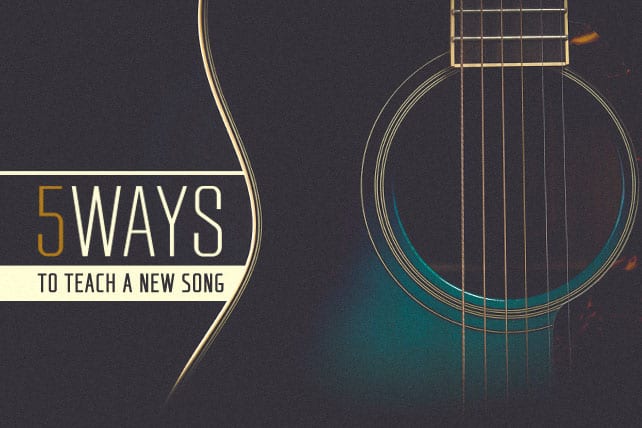TEACHING A SONG
One challenge that faces every worship leader is bringing new songs to the church. The majority of people don’t like change and churches are no exception. Some people just don’t like it when the worship leader gets up and says,
“OK, this morning I want to teach you a new song.”
Change is hard, but change is necessary. If we didn’t teach new songs, things would get stale and routine. It’s important that the worship leader brings fresh, new songs into church services.
Psalm 96:1 says, “Sing to the Lord a new song.”
It’s equally as important to teach new songs properly.
Here’s some tips on teaching a song:
1. MAKE SURE IT’S RIGHT—Before you teach a song, you need to make sure it’s right to even put it into your set list. Too many times, worship leaders download the new Hillsong United or Jesus Culture album, fall in love with the songs and force them on their church without consulting or considering. Make sure to consult God first. Make sure the song is biblical. There’s a lot of worship songs out there that don’t line up with scripture. Pray … yeah, that’s right … pray and wait for God’s peace about the new song. If God says no, leave it alone. Next, you want to consider your church. I know the song is killer on the album and it gets your juices flowing, but is it right for your church? Are they ready for the song? Will the average Joe in your crowd be able to sing it? Will your worship team be able to play it? Are the lyrics too deep for the current spiritual condition of your church? These are questions you must consider. Don’t let your desire to do a particular song override your desire to see your people worship. There may be nothing wrong with the song, but is it right for your church? Consult God and consider your church.
2. DRILL THE HOOK—The hook of the song is usually the chorus. It’s the part that people will remember when the song is over. It’s also the part they’ll probably sing the most during the song. Drilling the hook or teaching the chorus before you officially begin the song is so helpful for your crowd. It allows people to really participate as you go through it the first time. Teach and drill that hook before you start. Your crowd will appreciate it.
3. DO IT AGAIN—When you teach a new song, do it again the next week. It gives your church the chance to really learn it before you put it into your rotation. Sometimes, I’ll introduce a song as a theme for a short three- to four-week sermon series. By the time you get to that third week, your church will be internalizing and owning the song. This is a great thing. At the very least, try to repeat the new song the following week. Some songs take a few times to catch. You’ll see it when it happens. Just do it again.
4. SHARE THE STORY—There’s a story behind every song. When you find a new song and it resonates with you, dig deeper beyond the lyrics and music. Find out where it came from, who wrote it, when they wrote it and why they wrote it. The first time you teach the song to your church, share what you’ve learned. It will bring more depth and substance to the moment. Usually, there’s a scripture that has inspired a worship song. By all means, quote that scripture, put it on the screen and watch the power of God’s Word in action. It will prepare people’s hearts for the song like nothing else can. Share the story, then sing the song.
5. PLACE IT PROPERLY—The best place for a new song is right after a favorite song. When you do a song that everybody likes, you’ve given them what they want. Sometimes a new song is not what a church wants, but it’s what they need. The best time to give someone what they need is after you’ve given them what they want. They’re usually in a good mood. They’re more open to the new because they’ve just experienced the old. They’re more confident because they’re in the familiar. That’s a great, opportune time to teach a new song. It’s also very wise. You can get away with ending with a new song, but it’s usually a bad idea to begin with one. I’m not saying never, but it’s usually a bad place for it. When you place it properly, you give it the best chance to catch on.
What are some other tips you’ve learned in teaching a song?













